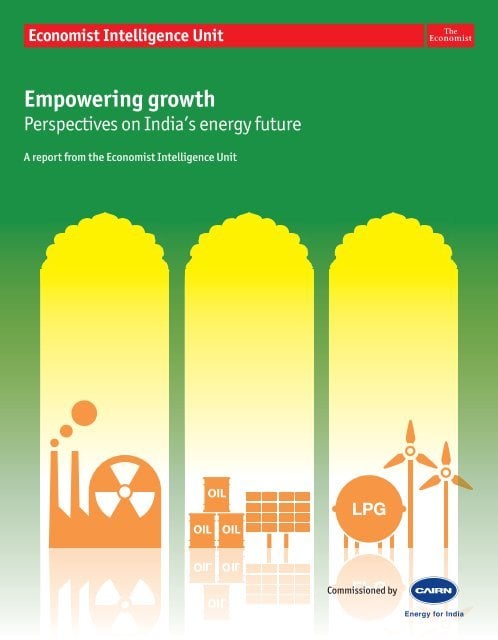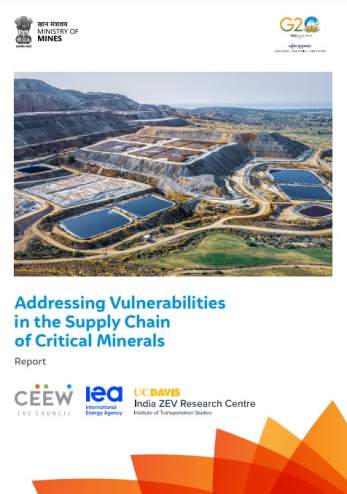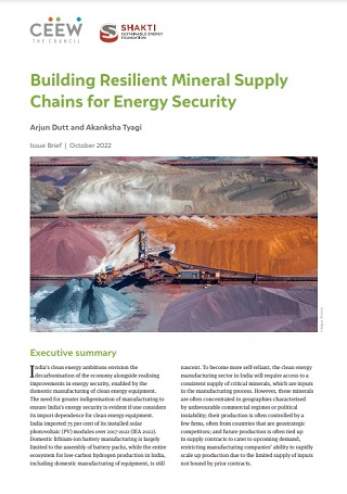Other Publications
Industrial Demand and Energy Supply Management
A Delicate Balance
Arunabha Ghosh
October 2012 | Technology Futures
Suggested citation: Arunabha Ghosh. 2012. “Industrial demand and energy supply management: A delicate balance”. Empowering growth - Perspectives on India’s energy future, A report from the Economist Intelligence Unit: 26-32.
Overview
This essay discusses the challenge that the Indian industry, especially manufacturing, faces in procuring enough energy to fuel its expansion. It discusses the energy sources for various industrial sub-sectors and the supply bottlenecks. Further, it deliberates the prospects for balancing industrial energy demand with energy supply. It also provides recommendations to enhance energy efficiency and related technology innovation in India.
Shares of industrial sub-sectors in final energy consumption
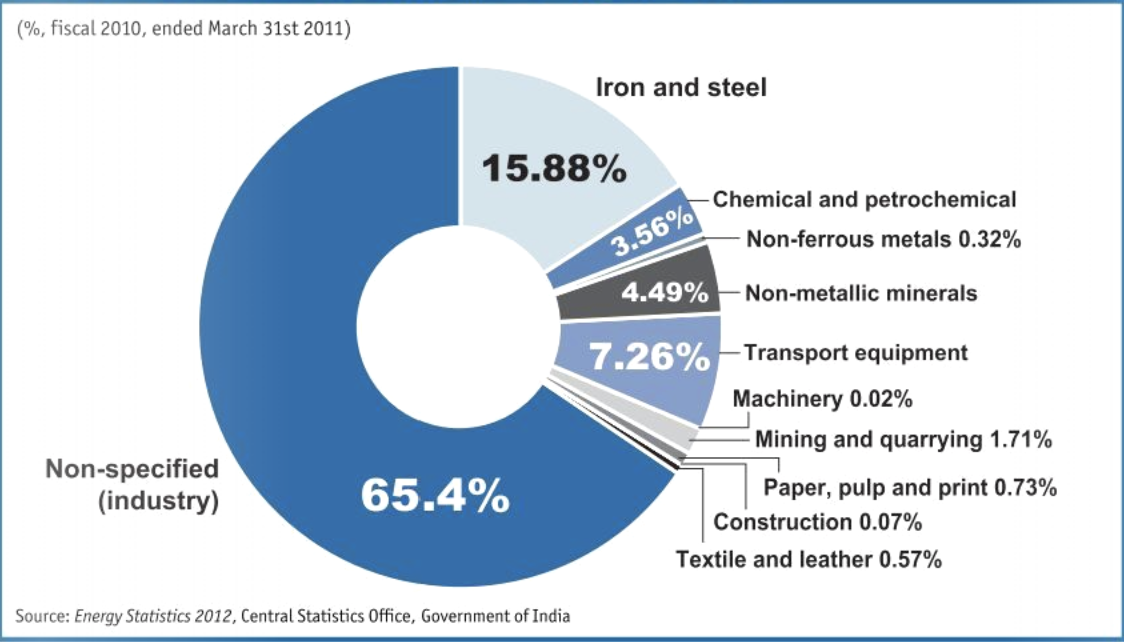
Source: Energy Statistics 2012, Central Statistics Office, Government of India
Key Highlights
- As per 2012, final energy consumption was dominated by the residential and industrial sectors, with 34 per cent and 33 per cent respectively.
- Coal accounted for half of the industry’s final energy consumption total of 163.3 Mtoe and oil products accounted for 19 per cent. Natural gas accounted for only 4 per cent.
- Coal provided 88 per cent of energy use for iron and steel production, and 100 per cent of energy use in non-metallic minerals, pulp and paper, and construction in 2012.
- The greatest increase in energy demand was expected in the energy-intensive sub-sectors: pulp and paper, aluminum, and iron and steel.
- Electricity consumption by the domestic sector outstripped that of agriculture for the first time during the same period. Also, the infrastructure to handle the rising energy demand and subsequent imports was inadequate.
- Ultra-mega power plants were being constructed in the western states, where an industrial corridor between Delhi and Mumbai was also being planned.
- Investments in grid infrastructure have long lagged a supply-side focus on electricity generation in terms of transmission and distribution networks. Also, staffing, training, modelling and scenario planning are crucial to the management and efficiency of a national grid.
- As of 2012, India’s net imports of key energy sources have been rising. Since 2005, crude oil imports jumped by 10.5 per cent annually and coal imports by 12 per cent annually.
Shares of industrial sub-sectors in final energy consumption
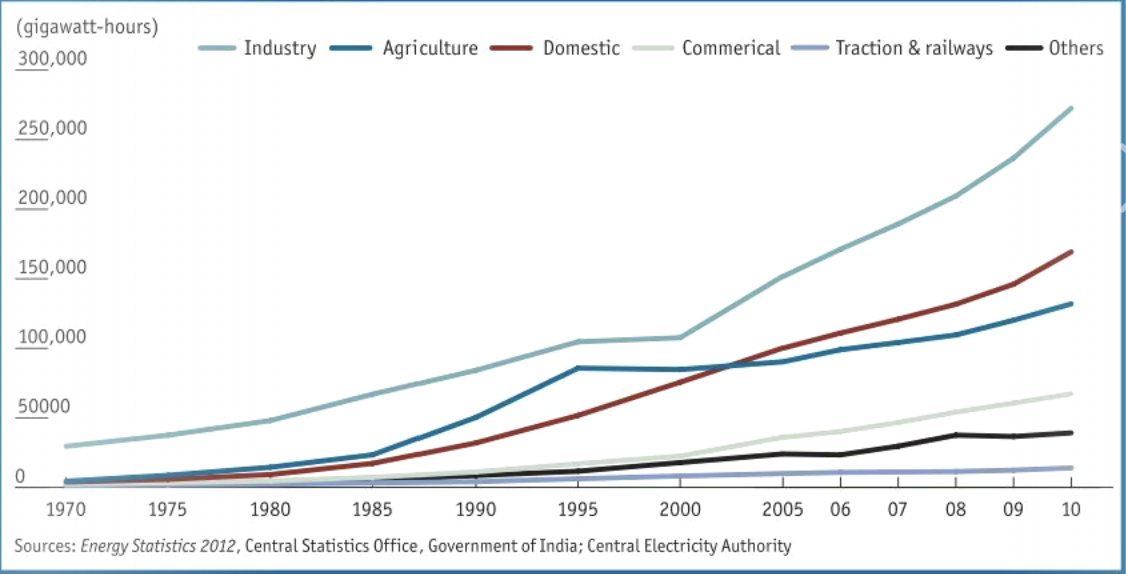
Source: Energy Statistics 2012, Central Statistics Office, Government of India; Central Electricity Authority
Key Recommendations
- Create a strategic approach to address energy demand or the need for energy efficiency within the industry. Put in place a process to secure access to resources at home or abroad.
- Take the lead in securing access to captive energy through allocated coal blocks or captive generation of electricity.
- Seek private and exclusive access to other energy sources such as building natural gas terminals and re-gasification facilities.
- Deepen government policies, schemes by offering incentives not only for overall plant energy efficiency but also for increasing efficiencies along the entire production process.
- Support energy efficiency in small and medium-sized enterprises as they might not have the financial and technical resources to undertake large efficiency promoting investment.
- Map energy-resources for all sectors so as to anticipate and prepare for potential vulnerabilities in physical supply or fluctuating energy prices.
- Innovate infrastructure by investing in software for energy management, training of grid operators, and building up a parallel “soft” energy infrastructure.
- Do not limit technological innovation to upstream exploration and extraction activities for mineral resources.
Technological breakthroughs in smart grids, usage efficiency, reduced land and water requirements, and better energy storage capacities could help to reduce energy demand at one end and improve energy stability of supply at the other.




